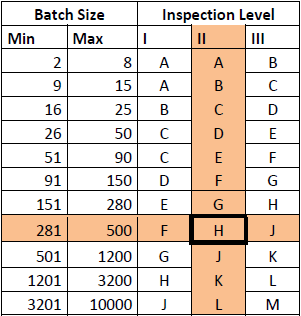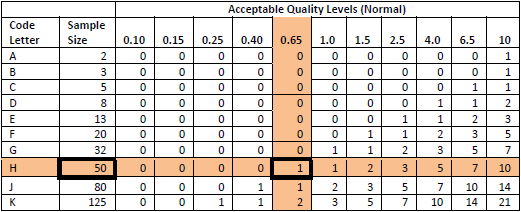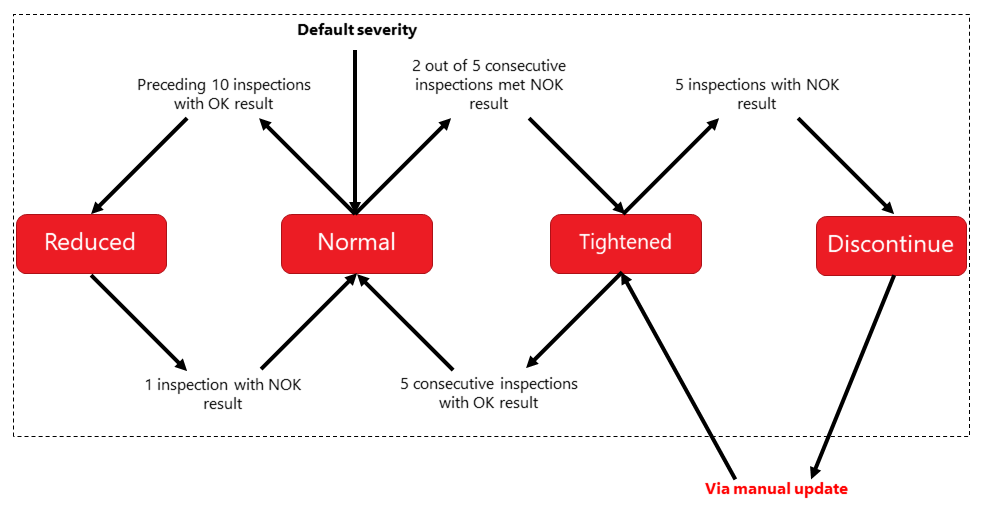AQL inspections
In certain product categories, almost every batch of goods will contain one or more non-conform items. Therefore, in many supplier -/ customer relations, the supplier is not expected to deliver defect-free goods. To pursue a certain quality level, the supplier can inspect produced, or the customer can inspect received items to avoid an 'excess' of non-conform items.
AQL (Acceptance Quality Limit) determines (on the basis of tables) for a batch with a given size the maximum number of non-conform items, by means of a number of samples (a certain percentage of the batch is inspected, of this part a maximum number of References (uniquely identified items) may be non-conform). If this number is exceeded, the full batch is rejected.
Several parameters are important to use the AQL tables:
- Batch Size
- Inspection level (configurable in Objective): determines the sample size
- Sample size: the number of References that needs to be inspected per batch size
- Quality level (configurable in Objective): determines the maximum number of non-conform References per sample size (acceptance number)
- Inspection severity (configurable in Objective): determines how rigorous a received or produced batch of an item needs to be inspected (normal, reduced, tightened, discontinued).
With a first table, the code letter will be determined.
Suppose that we have a batch size of 400, and the inspection level is set to II. We obtain code letter H.


The table above has a 'Normal' Inspection Severity. This is the default value within Objective. Based on previous inspection results of the relevant supplier and the relevant item, switching between inspection severities takes place via the switching rules.
If, for example, a new item is being produced, the inspection severity can be set to 'tightened' for a certain period of time. This implies that another table will be used to determine the quality level, with the enforcement of larger sample sizes by definition, and less non-conform items will be tolerable for a certain sample size.
However, if a series of inspections has an OK result, the inspection severity can evolve from 'tightened' to 'normal', and subsequently to 'reduced'.

